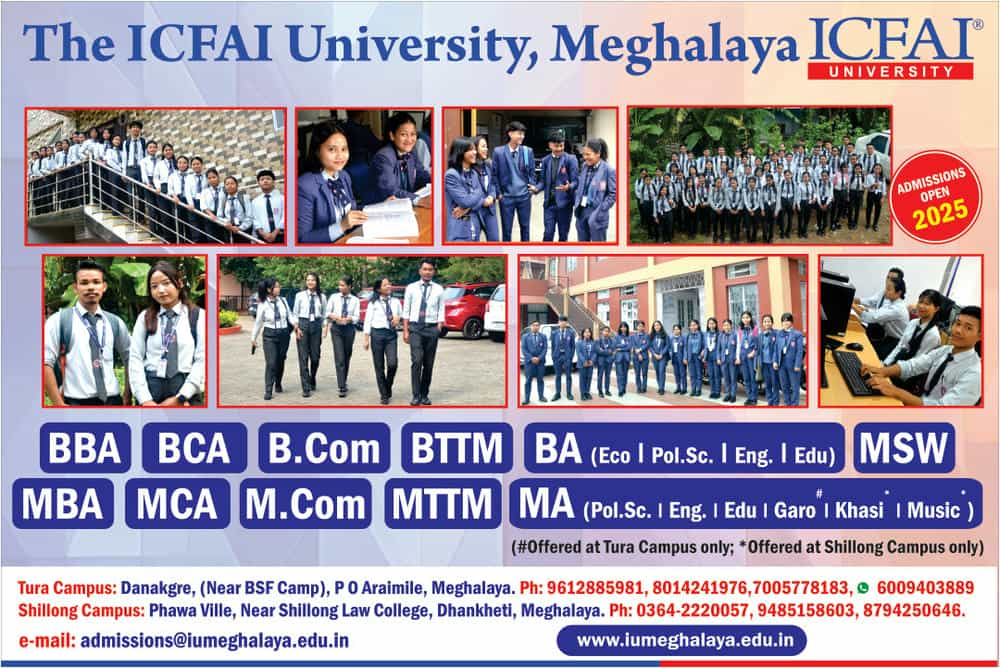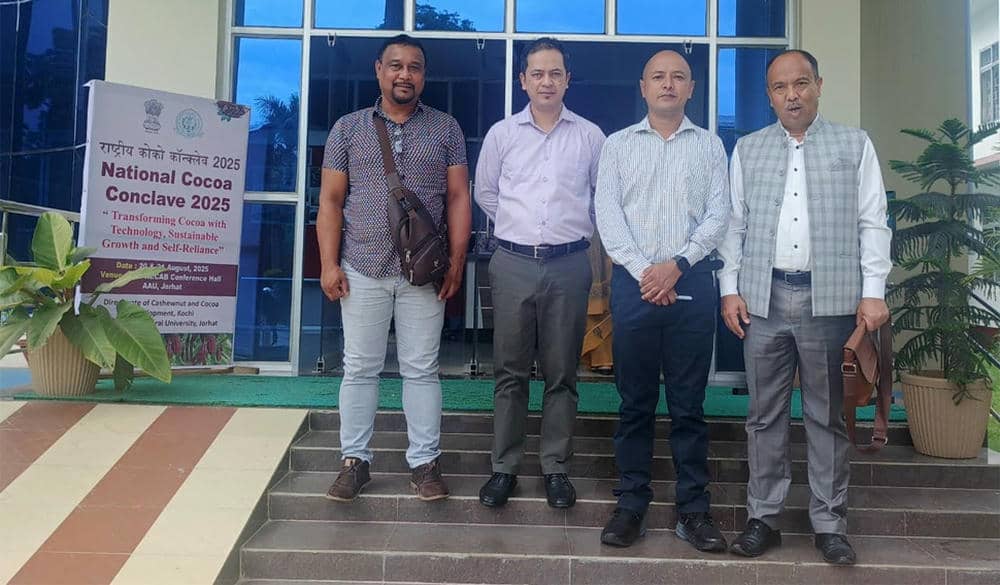Meghalaya eyes “Brown Gold”: Cocoa and cashewnut present new agricultural opportunities

Cocoa, often called “brown gold,” and cashewnut, a high-value crop, could soon transform Meghalaya’s agricultural landscape.
Officials from the state participated in the National Cocoa and Cashewnut Conclave 2025 at Assam Agricultural University, Jorhat, gaining firsthand knowledge on plantation planning, disease management, post-harvest processing, and value addition.
The two-day conclave, held on August 20–21 at the DBT-NECAB Conference Hall, was organised by the Directorate of Cashewnut and Cocoa Development (DCCD), Kochi, in collaboration with Assam Agricultural University.
Mizoram Agriculture Minister P.C. Vanlalruata, who inaugurated the event, emphasized the potential of cocoa and cashewnut to improve rural livelihoods and strengthen India’s economy. He called for clear policy and planning frameworks to support states like Meghalaya in initiating high-value crop cultivation.
Meghalaya’s delegation included key officials from the Meghalaya State Farm and Agricultural Corporation (MgSFAC), including M. Dkhar, Joint Managing Director, and Mukta M. Sangma, Assistant Director of Horticulture. From the Plantation Crops Division and Soil & Water Conservation Department, the team included Lamphrang Pohktai, Divisional Soil & Water Conservation Officer of Jowai Plantation Crops Division; Donkupar S. Kharshiing, Divisional Soil & Water Conservation Officer of Shillong Plantation Crops Division; Nuetenroy Basaiawmoit, Assistant Soil & Water Conservation Officer in Shillong; and Patrick Lamare, Soil & Water Conservation Ranger, Shillong Plantation Crops Division.
Officials said the conclave provided a clear roadmap for introducing cocoa and cashewnut in Meghalaya, covering nursery management, pest and disease control, and post-harvest processing.
Technical sessions and key takeaways
The conclave featured multiple technical sessions led by eminent scientists and industry experts. Dr. Femina, Director of DCCD, Cochin, spoke on “Strengthening the Cocoa and Cashewnut Foundation: A Pathway to Sustainable Growth and Self-Sufficiency”. Dr. Suma B., Professor & Head (Retd.), Cocoa Research Centre, KAU, Thrissur, led a session on “Polyclonal Seed Gardens and the Cocoa-Cashewnut Cultivation System: The Backbone of Quality Planting Material”.
Dr. Elain Apshara, Principal Scientist, CPCRI, Regional Station, Vittal, presented on “Strengthening Nursery Systems and Integrated Soil & Plant Health Management for Superior Cocoa and Cashewnut Production”, while Dr. Kaberi Mahanta, Associate Professor, AICRP on Agroforestry, AAU Jorhat, shared insights on “Agroforestry Integration for Biodiversity, Sustainability and Carbon Sequestration in Cocoa and Cashewnut Systems”.
Post-harvest sessions included Dr. Minimol J.S., Professor & Head, Cocoa Research Centre, KAU, Thrissur, speaking on “Optimising Post-Harvest Practices to Strengthen India’s Cocoa and Cashewnut Value Chain”, and Nitin Chordia, Cocotrait, Chennai, addressing “Bean-to-Bar Chocolate and Cashew Processing: Entrepreneurial Pathways for Premium Products”.
The conclave also highlighted innovations in disease and pest management for both cocoa and cashewnut, with Dr. V. Anoosha, Scientist (Entomology), Horticulture Research Station, Dr. YSRHU, presenting advanced strategies for healthy plantations.
Cocoa and Cashewnut Potential for Meghalaya
India produces around 32,908 metric tonnes of cocoa annually and has a significant cashewnut sector, but domestic demand far exceeds supply. Imports of cocoa products reached 1.19 lakh MT valued at Rs 8,427 crore in 2024–25, while exports were only 18,178 MT worth Rs 2,512 crore. Cashewnut also offers high-value returns and is suitable as an intercrop. Experts highlighted that both crops are compatible with existing plantations of coconut, arecanut, and oil palm, making them ideal for Meghalaya’s hilly terrain.
Officials said that leveraging the insights from the conclave can help Meghalaya diversify farm income, enhance climate-resilient agriculture, and create sustainable rural livelihoods. The conclave concluded with the message that cocoa and cashewnut—the “brown golds” of agriculture—offer Meghalaya a pathway to economic growth, starting with key districts, and gradually expanding across the state.



Leave a Reply